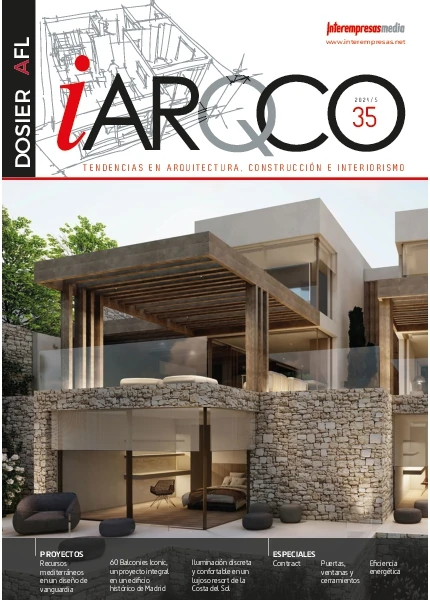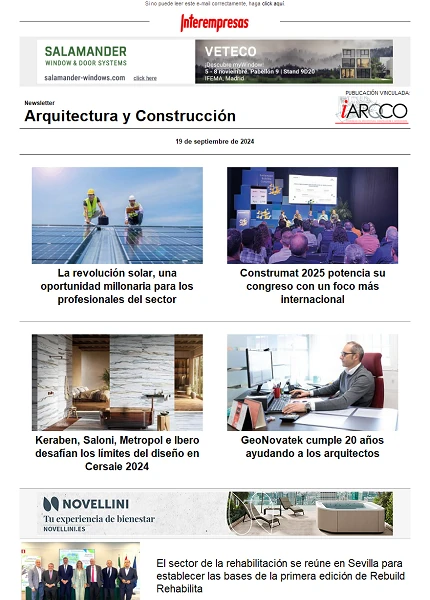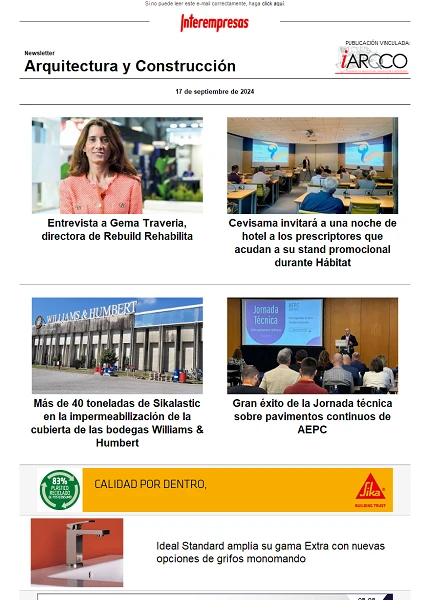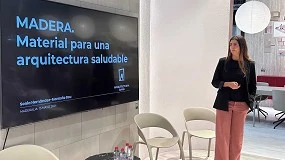Residuos peligrosos en la construcción y la obra pública
18 de abril de 2011
La reforma legislativa sobre residuos está de máxima actualidad. En el caso de los residuos peligrosos, existen una serie de lagunas que se siguen manteniendo incluso en el nuevo proyecto de Ley de Residuos y Suelos Contaminados, de forma que cuando éstos se encuentran, en muchas ocasiones se desconoce la manera adecuada de proceder. Esto provoca que muchos de estos residuos “desaparezcan”, con las perniciosas consecuencias que esto puede provocar donde sea que los residuos peligrosos acaben. La Asociación de Descontaminación de Residuos Peligrosos (ADRP) explica en este reportaje las pautas y procedimientos estandarizados a seguir cuando aparecen residuos peligrosos, que incluyen la investigación, identificación y cuantificación de residuos peligrosos antes de acometer cualquier tipo de trabajo.
En el cambio de uso de edificios, rehabilitaciones, reformas, demoliciones, y en multitud de obras de construcción, es muy frecuente que aparezcan residuos peligrosos. Cuando esto sucede, suelen surgir dudas acerca de qué hacer con ellos.
Esta falta de información y de control por las autoridades competentes, provoca que, en ocasiones, estos residuos acaben “desapareciendo” de forma sigilosa, siendo vertidos en lugares que distan mucho de ser los indicados, o bien mezclados en contenedores a pie de calle con otro tipo de residuos.
Esta problemática, derivada de no establecer claramente los procesos aplicables en cada caso, tiene como resultado efectos perjudiciales para el ser humano y muy graves para el medio ambiente.
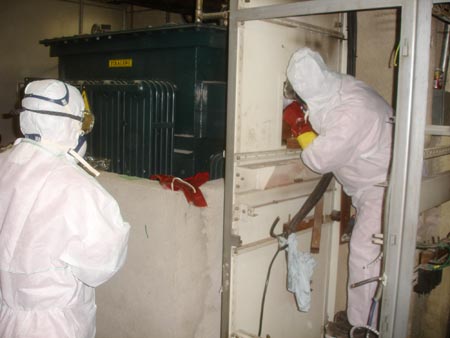
Reforma legislativa
En estos momentos se está acometiendo una reforma legislativa a nivel nacional y comunitario, que debería servir para solventar las lagunas que existen actualmente en la legislación sobre residuos.
Se plantean numerosos interrogantes acerca de las responsabilidades y los modos de gestión en múltiples ámbitos, pero especialmente en la ejecución práctica de la retirada de residuos peligrosos y descontaminación de la zona.
La Directiva Marco de Residuos (DMR) fue publicada el 19 de noviembre de 2008. A partir de entonces, los países miembro de la Unión Europea han comenzado el proceso de trasposición a su marco legislativo nacional sobre residuos. En el caso de España, el proyecto de Ley de Residuos y Suelos contaminados ya está en el Consejo de Ministros, en la recta final para ser aprobada.
Residuos peligrosos
En el Proyecto de Ley, se define como residuo peligroso aquel “que presenta una o varias de las características peligrosas enumeradas en el Anexo III, y aquél que pueda aprobar el Gobierno de conformidad con lo establecido en la normativa europea o en los convenios internacionales de los que España sea parte, así como los recipientes y envases que los hayan contenido”.
- H1 Explosivo: sustancias y preparados que pueden explosionar bajo el efecto de la llama o que son más sensibles a los choques o las fricciones que el dinitrobenceno.
- H2 Oxidante: sustancias y preparados que presentan reacciones altamente exotérmicas al entrar en contacto con otras sustancias, en particular sustancias inflamables.
- H3-A Fácilmente inflamable: sustancias y los preparados líquidos que tienen un punto de inflamación inferior a 21 °C, los que pueden calentarse y finalmente inflamarse en contacto con el aire a temperatura ambiente sin aporte de energía, aquellos que pueden inflamarse fácilmente tras un breve contacto con una fuente de ignición y que continúan ardiendo o consumiéndose después del alejamiento de la fuente de ignición; aquellos que son inflamables en el aire a presión normal y los que, en contacto con el agua o el aire húmedo, desprenden gases fácilmente inflamables en cantidades peligrosas.
- H3-B Inflamable: sustancias y preparados líquidos que tienen un punto de inflamación superior o igual a 21 °C e inferior o igual a 55 °C.
- H4 Irritante: sustancias y preparados no corrosivos que pueden causar una reacción inflamatoria por contacto con la piel o las mucosas.
- H5 Nocivo: sustancias y los preparados que por inhalación, ingestión o penetración cutánea pueden entrañar riesgos de gravedad limitada para la salud.
- H6 Tóxico: sustancias y preparados que por inhalación, ingestión o penetración cutánea pueden entrañar riesgos graves, agudos o crónicos e incluso la muerte.
- H7 Cancerígeno: sustancias y preparados que por inhalación, ingestión o penetración cutánea pueden producir cáncer o aumentar su frecuencia.
- H8 Corrosivo: sustancias y preparados que pueden destruir tejidos vivos al entrar en contacto con ellos.
- H 9 Infeccioso: sustancias y preparados que contienen microorganismos viables, o sus toxinas, de los que se sabe o existen razones fundadas para creer que causan enfermedades.
- H 10 Tóxico para la reproducción: sustancias y preparados que por inhalación, ingestión o penetración cutánea pueden producir malformaciones congénitas no hereditarias o aumentar su frecuencia.
- H 11 Mutagénico: sustancias y preparados que por inhalación, ingestión o penetración cutánea pueden producir defectos genéticos hereditarios o aumentar su frecuencia.
- H 12: Residuos que emiten gases tóxicos al entrar en contacto con determinados medios.
- H 13 Sensibilizante: sustancias y preparados que, por inhalación o penetración cutánea, pueden ocasionar una reacción de hipersensibilización, de forma que una exposición posterior a esa sustancia o preparado dé lugar a efectos nocivos.
- H 14 Ecotóxico: residuos que presentan o pueden presentar riesgos inmediatos o diferidos para uno o más compartimentos del medio ambiente.
- H 15: Residuos susceptibles de dar lugar a otra sustancia peligrosa por un medio cualquiera, por ejemplo, un lixiviado que posee alguna de las características antes enumeradas.
Leyendo detenidamente esta tabla, es fácil percibir que cada vez son más los materiales y productos que se puede clasificar como residuos peligrosos, o bien al final de su vida útil, o bien porque deben dejarse de usar de inmediato.
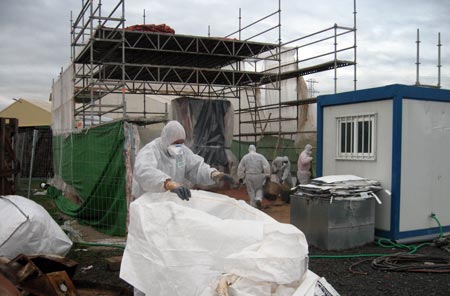
¿Quién debe investigar si un residuo es peligroso? ¿Cómo debe hacerlo?
Debido a su especial condición y a las dispares características que pueden tener, los residuos peligrosos deben gestionarse de forma específica; especialmente los que precisan un proceso de descontaminación.
Sin embargo, en el actual Proyecto de ley se ha obviado quién, cómo y qué procesos de control se deben de seguir en el caso de estar ante residuos peligrosos. En teoría, debería haber alguien que desarrolle una investigación e identifique el tipo de residuo al que nos enfrentamos, cuantificando la cantidad encontrada, para después comenzar el proceso de gestión que proceda (aislamiento, descontaminación, retirada…).
Además, todos los residuos peligrosos, deben ser trasladados a un gestor final autorizado, que se encarga de realizar las operaciones de tratamiento y/o almacenamiento final de los mismos. Toda la parte de control y seguimiento, desde el momento en que los residuos peligrosos inician su camino hacia el gestor final está, en general, bien definida e instrumentalizada. Sin embargo, el verdadero problema está en quién debe investigar si un residuo es peligroso, y cómo debe hacerlo.
Esta clara indefinición no es nueva, ya en la legislación previa de residuos, tanto la general (Ley de Residuos 10/1998), como otras más específicas (Real Decreto 105/2008 sobre residuos de construcción y demolición) e incluso especializadas (Real Decreto 396/2006 sobre riesgo de exposición al amianto) se mencionaba la oportunidad de realizar una investigación e identificación previas, pero sin concretar en ningún momento los procedimientos.
En el caso del amianto, que suele ser el residuo peligroso que se toma como referencia a la hora de hablar de descontaminación, existen tímidos intentos de explicar qué se debe hacer al respecto, pero sin especificar quién y cómo, con lo cual el problema se mantiene.
En general, se puede decir que, al no precisarse de forma específica en el marco legislativo, queda a la buena voluntad de quien se encuentre ante residuos peligrosos elegir el modo de proceder, o bien arriesgarse a ser llevado a juicio, para que sea el juez quién decida si el trabajo se realizó adecuadamente.
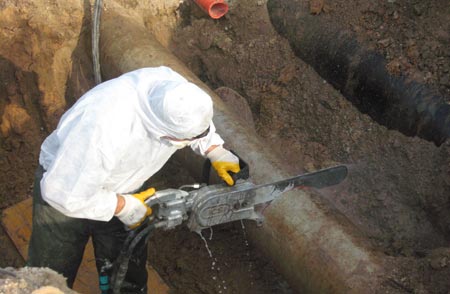
Protocolo de actuación
Desde la Asociación de Descontaminación de Residuos Peligrosos, ADRP, se propone establecer un protocolo de actuación para la investigación, identificación y cuantificación de residuos peligrosos, que sea aplicable de forma general, independientemente del sector o actividad (industria, construcción, naval…).
Se hace necesario definir estas pautas de actuación, que deberían pasar necesariamente por las ya mencionadas fases de investigación, identificación y cuantificación de los residuos peligrosos existentes en cada caso, como paso previo al inicio de los trabajos. Si no se encuentran residuos peligrosos, que se pueda demostrar que se han realizado las necesarias pesquisas, y si aparecen, que se documenten cuántos y en qué lugares.
También deberán enlazarse estas pautas con las medidas de control y seguimiento ya existentes, favoreciendo como establece la legislación europea el libre tránsito de los residuos siempre que se gestionen adecuadamente.
Además, debería ser un agente independiente el que se encargue de estas tareas de identificación, investigación y cuantificación. No tiene sentido que el titular de la propiedad (edificio, industria, navío…) sea quién decida qué es peligroso, ni mucho menos sus proveedores (empresas constructoras, demoledores, especialistas en descontaminación).
ADRP propone llevar a cabo un proyecto que sirva para definir cómo deben hacerse estos procesos. Con la colaboración de AECCTI, la Asociación de Empresas de Control de Calidad y Control Técnico Independientes, se propone desarrollar dicho protocolo, para que cualquier entidad acreditada pueda realizar esta labor conforme a lo establecido en el mismo.


